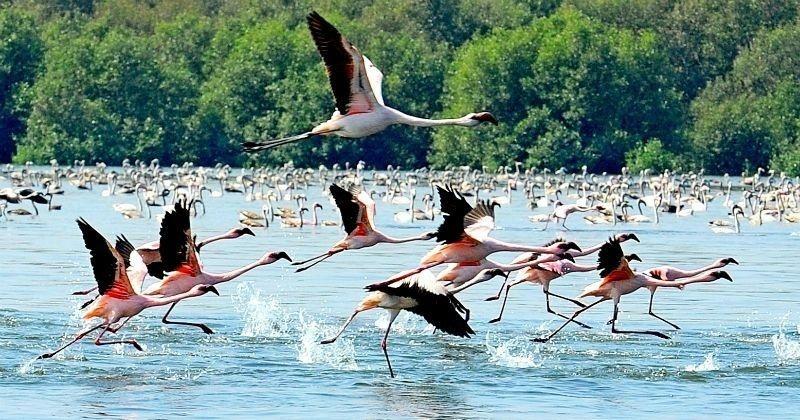
ECO SENSITIVE ZONE AROUND THANE CREEK FLAMINGO SANCTUARY
CONTEXT
The ministry of Environment, Forest and Climate Change has on April 30 notified 48.32 sq km around the Thane Creek Flamingo Sanctuary (TCFS) as an eco-sensitive zone (ESZ). he ESZ is meant to act as a buffer for protected areas and reduces developmental pressures around a wildlife sanctuary or national park.
MORE ABOUT NEWS
Thane Creek – Thane Creek is an inlet in the shoreline of the Arabian Sea that isolates the city of Mumbai from the Indian mainland.
o The creek is divided into two parts. The first part lies between Ghodbunder and Thane, a section from where the Ulhas river flows from the north of Mumbai Island to meet the Arabian Sea on the west.
o The second part of the waterway lies between the city of Thane and the Arabian Sea at Trombay / Uran, before the Gharapuri islands.
o Thane Creek was formed due to a seismic fault lying below it which runs from Uran to Thane.
BACK TO BASICS
ECO SENSITIVE ZONE
o Eco Sensitive Zone are areas in India notified by the Ministry of Environment, Forests and Climate Change (MoEFCC) around Protected Areas, National Parks and Wildlife Sanctuaries.
o The purpose of declaring ESZs is to create some kind of “shock absorbers” to the protected areas by regulating and managing the activities around such areas. They also act as a transition zone from areas of high protection to areas involving lesser protection.
o Authority – ESZs are regulated by central government through the Min. of Environment, Forests and Climate change (MoEFCC). The Ministry came out with new guidelines for the regulation of such areas in 2011.
o Regulation of Activities in ESZs
Prohibited Activities – Commercial mining, saw mills, industries causing pollution (air, water, soil, noise etc), establishment of major hydroelectric projects (HEP), commercial use of wood, Tourism activities like hot-air balloons over the National Park, discharge of effluents or any solid waste or production of hazardous substances.
Regulated Activities – Felling of trees, establishment of hotels and resorts, commercial use of natural water,
erection of electrical cables, drastic change of agriculture system, e.g. adoption of heavy technology, pesticides
etc, widening of roads.
Permitted Activities – Ongoing agricultural or horticultural practices, rainwater harvesting, organic farming, use of renewable energy sources, adoption of green technology for all activities.
